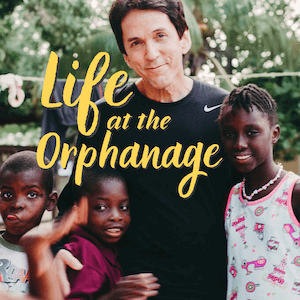I’ve been doing a lot of traveling lately, and here is what I’ve observed about America’s current response to COVID-19: It’s all over the map.
On the streets of New York, I saw people riding bicycles with masks on, and was asked to show a vaccine card before sitting down in a restaurant. At the famous arch in St. Louis, I saw people posing for photos side by side, no masks anywhere. In a Connecticut library speech, people were seated in clusters, socially distanced, masks up. At an Ohio event, every seat was full, side by side, distance not a factor.
I’ve been in hotels where clerks are still behind glass, and in restaurants where the waiters lean in unmasked to take your order. There are workplaces that are complying with the Biden administration’s mandate that everyone be vaccinated, and there are workplaces that are challenging it. Many large offices warn no shot, no job; some small offices say come in, we’ll take our chances.
In other words, COVID-19 practices, policies and attitudes all depend on where you go, what you do and who you do it with. There is no overriding national approach. No one size fits all. And there isn’t likely to be one again.
So the question is, as Captain America once asked his fellow Avengers:
“Are we done here?”
Comfortable with coronavirus
At what point is the COVID-19 plague over? At what point does the crisis morph into just another-thing-we-have-to-deal-with — like the flu, drunken drivers, food poisoning or the risk of robbery?
This question has been postulated by various media outlets lately. Of the many I’ve read, the quote that stands out comes from an epidemiologist at Johns Hopkins University who, when asked by the Washington Post when the pandemic would end, said: “It doesn’t end. We just stop caring.”
“Acceptable losses.” I wrote last year that ultimately that phrase would determine the duration of this pandemic. It still holds today. What are we willing to chance? What are we willing to lose?
Most people seem to have made up their minds. Many are no longer hiding. They are going to malls, going to churches. I just bought tickets for the Rolling Stones concert at Ford Field and there weren’t many left — and that place holds over 60,000 people! Last year, the idea of a rock concert that size would have been unthinkable.
But people can read. The numbers are out there. The fact is, the chances of dying of COVID-19 were always extremely small for most segments of the population. The chances of dying of COVID-19 now, if fully vaccinated, are extremely small for ALL segments of the population. A study from the Kaiser Family Foundation in July showed that — despite the handwringing over “breakthrough cases” — the mortality rate among fully vaccinated people was “effectively zero (0.00%) in all but two reporting states, Arkansas and Michigan where they were 0.01%.”
How much smaller does it get?
Return to normal? We may already be there
So, statistically anyhow, the vaccinated potion of the American adult public — which is 70%, according to the White House, not even counting those who have natural immunity from having had the virus — would appear to be gripping the doorknob of a return to normal life.
Then why doesn’t it feel that way? Why does it feel like the weather report says sunny, but the skies look dark and full of rain?
The world looks different now, due less to the dangers of the disease than to the consequences of it. Your favorite restaurant now closes at 7 p.m. because it can’t find help. That boutique you used to love went out of business. That government office you need to visit still isn’t accepting in-person appointments. Your dental hygienist still dresses like a biohazard worker.
We keep waiting for a rewind to indicate all is well. Here’s the bad news. That rewind may never come. The world is not obligated to return to its 2019 appearance.
“Normal” may indeed be shorter evening hours, longer wait times, half-empty office buildings and people wearing masks here, there but not everywhere. Normal may mean masks permanently in courtrooms or on planes (although I’m not sure why a quiet, air-circulated environment demands face coverings, but some concert venues, where people scream and sing for hours, do not).
Ignoring the risk won’t make it go away
We should stop waiting for the world to return if we’re planning to return to the world. In some countries, it was always normal to wear masks due to concerns about spreading germs. It will likely be normal in America now, too. Showing vaccine cards may be a permanent practice for entering certain facilities — just like showing an ID card is now.
These things aren’t what determine normalcy. Normalcy comes when you factor all the weirdness in, then do what you were going to do anyhow. People always knew a bad case of the flu could hospitalize or even kill them. It didn’t stop them from living. A drunken driver or a speeding motorist could always cost you your life. It didn’t stop you from driving.
COVID-19 will be like that. It’s out there. It’ll continue to be out there. It will probably require regular shots to assure protection. But when you place certain fundamentals of life on one scale — socializing, working, traveling, embracing — and put COVID-19 worries on the other, more and more people are coming down on the side of acceptable risk.
So don’t expect a D-Day headline proclaiming coronavirus is defeated. Like many American issues, it will mainly diminish by neglect.
“We’ll just stop caring,” the epidemiologist said.
Or maybe we already have.
Contact Mitch Albom: malbom@freepress.com. Check out the latest updates with his charities, books and events at MitchAlbom.com. Download “The Sports Reporters” podcast each Monday and Thursday on-demand through Apple Podcasts, Google Play, Spotify and more. Follow him on Twitter @mitchalbom.





0 Comments